Is this an amusement park or a kindergarten? Architects and designers of today disrupt the typology of a nursery school with its boring standardized exteriors, developing exciting and aspirational environments for the new generations of pre-schoolers.
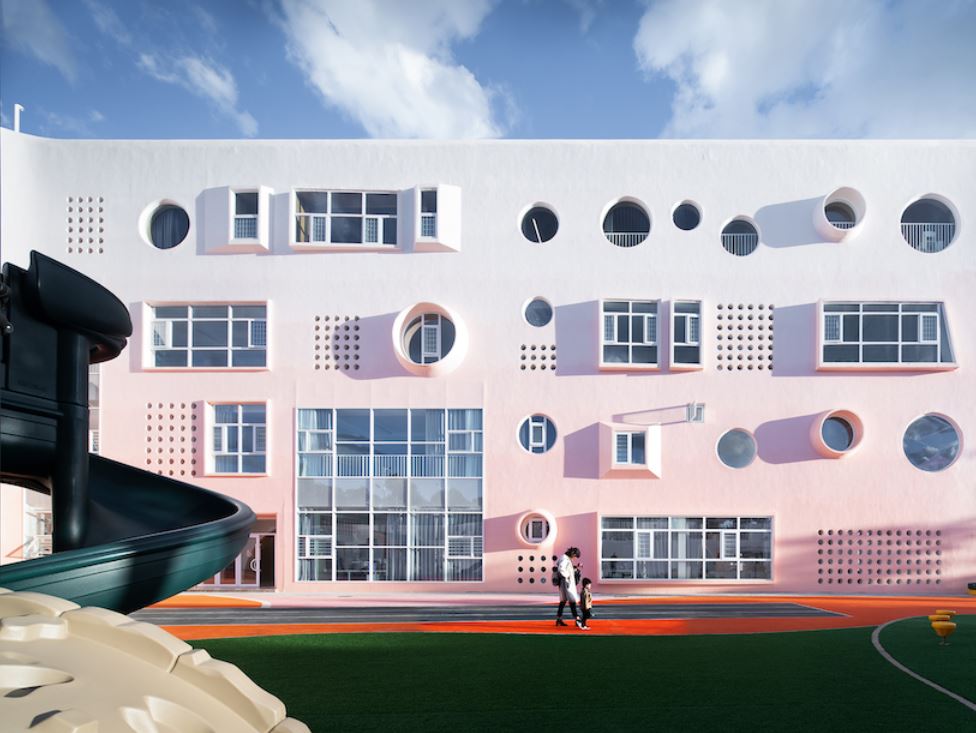
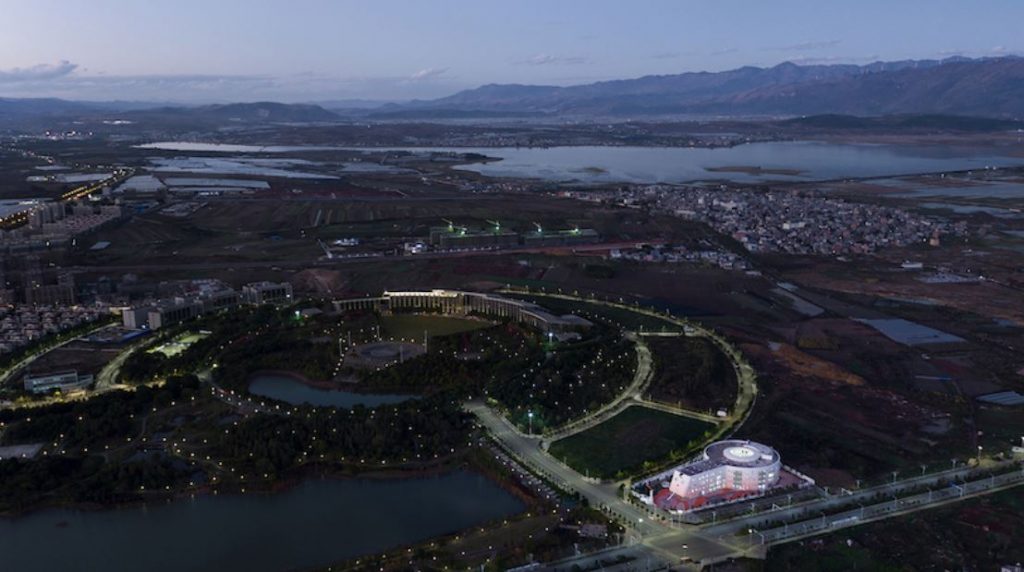
Lollipop Ideal Garden by Dika Kindergarten Design Center (also header image)
The award-winning Lollipop Ideal Garden, located in China’s southwestern Yunnan province, has got its name from its layout. Inspired by the children’s drawings and ideas of utopia, Xi’An City based Dika Kindergarten Design Center organized the building’s program into a completely circular structure with an intersecting straight wing.
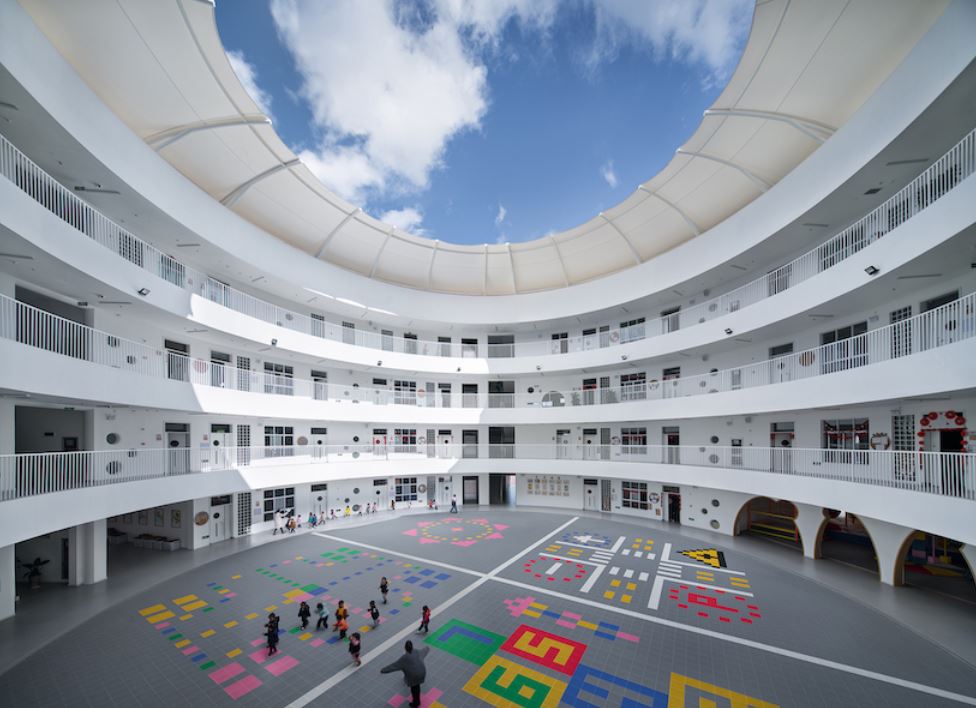
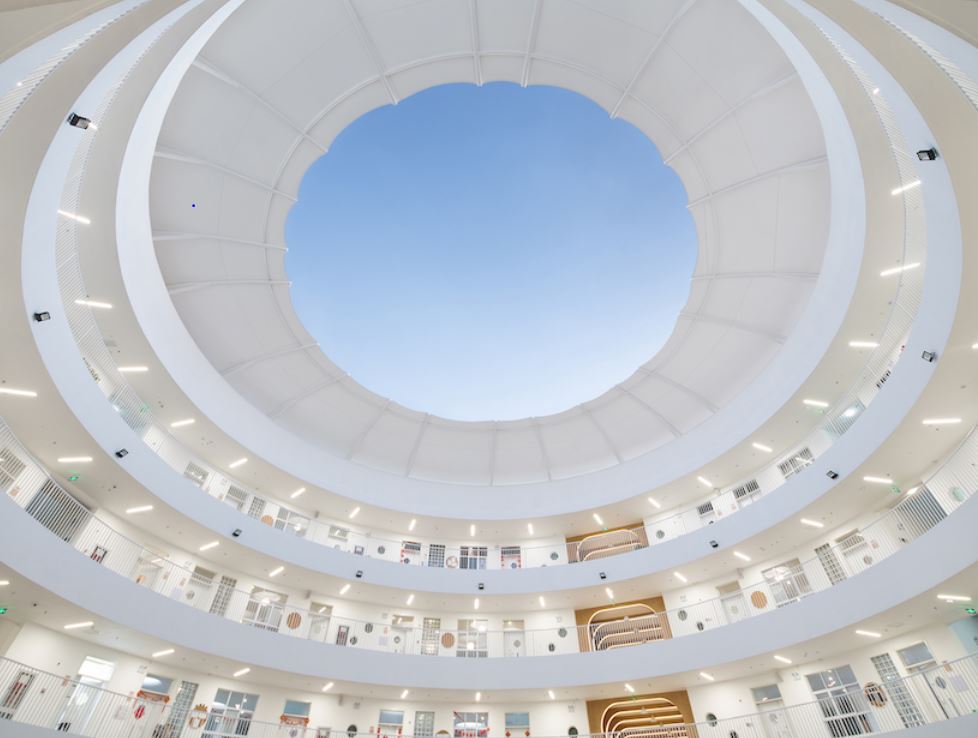
Lollipop Ideal Garden by Dika Kindergarten Design Center
The circular part of the 10,684 sqm building is occupied by an open-air courtyard that is designed as a playground area. The atrium is flooded with warm natural lighting from overhead. The light well is overlooked by four stories of classrooms.
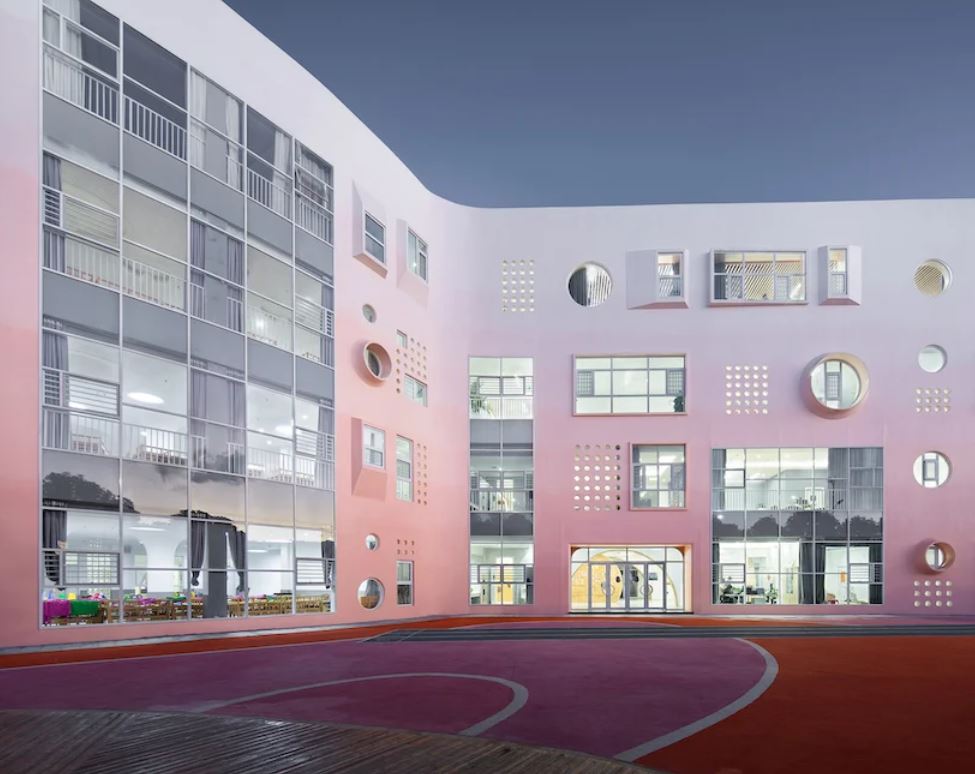
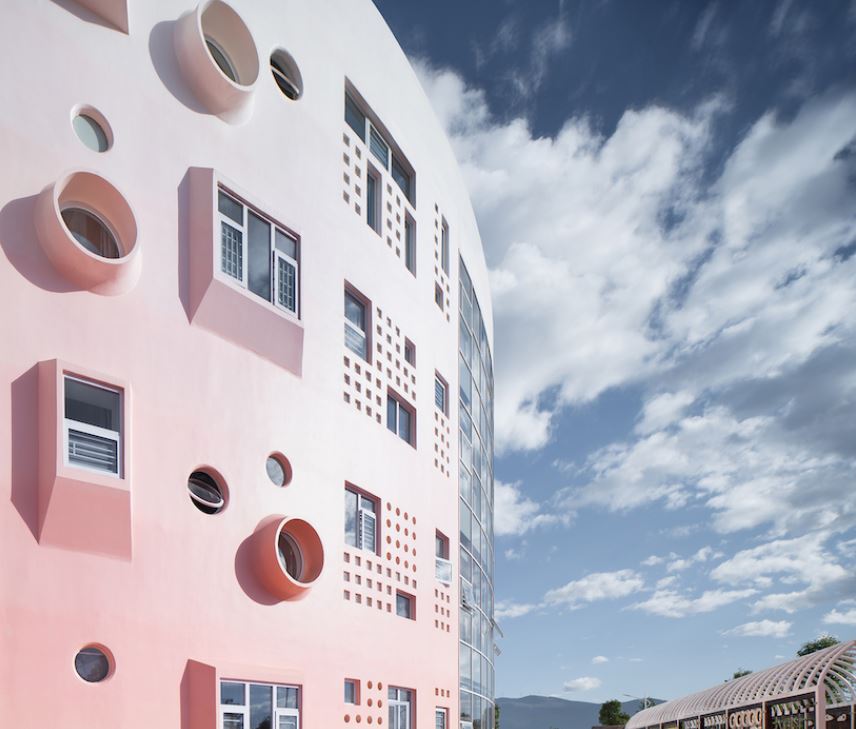
Lollipop Ideal Garden by Dika Kindergarten Design Center
The new landmark of the city features a pastel pink coloured façade gradient, which softens the coldness and roughness of the building’s concrete finish and revives the otherwise monochrome surroundings. The façade is punctuated by circular openings of all sizes along with square and more traditional rectangular windows. The alternating shapes create a dynamic surface, and produce unique lighting qualities in each space’s interior. Besides, the abutting end at the very tip of the lollipop stick includes a caricature face from which children can slide down its mouth.
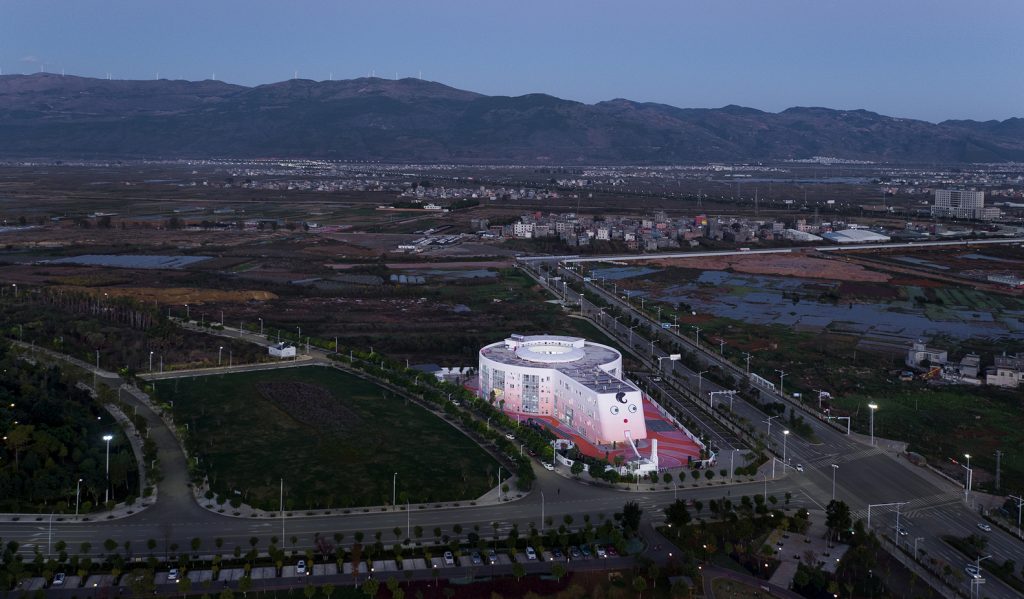
Lollipop Ideal Garden by Dika Kindergarten Design Center
The building is surrounded by a huge playground that features a filed for track-and-fields events, as well as multiple ball sport courts.
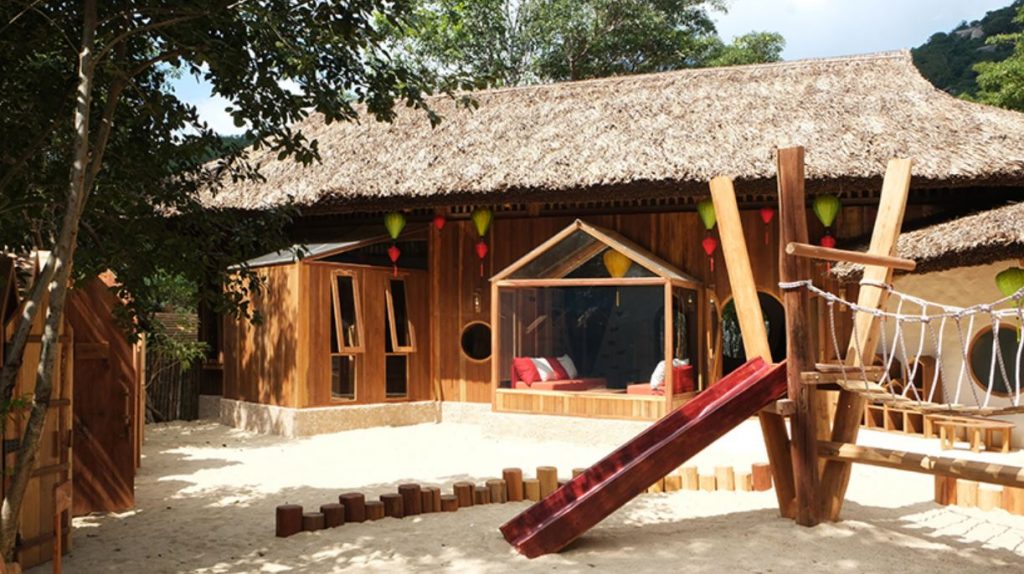
VOOC village kids club at the Sixsense Ninh Van Bay Resort
Commissioned to develop a kids club and playground for the Sixsense Ninh Van Bay Resort in Vietnam, local architecture studios Chi.Arch and 4S.group has drawn inspiration from the local culture and traditional Vietnamese architecture. The architects has used wood, coconut leafs and many other local, natural materials to create a charming playground space that reflects harmony with the surrounding landscape characterized by white sand beaches and towering mountains.
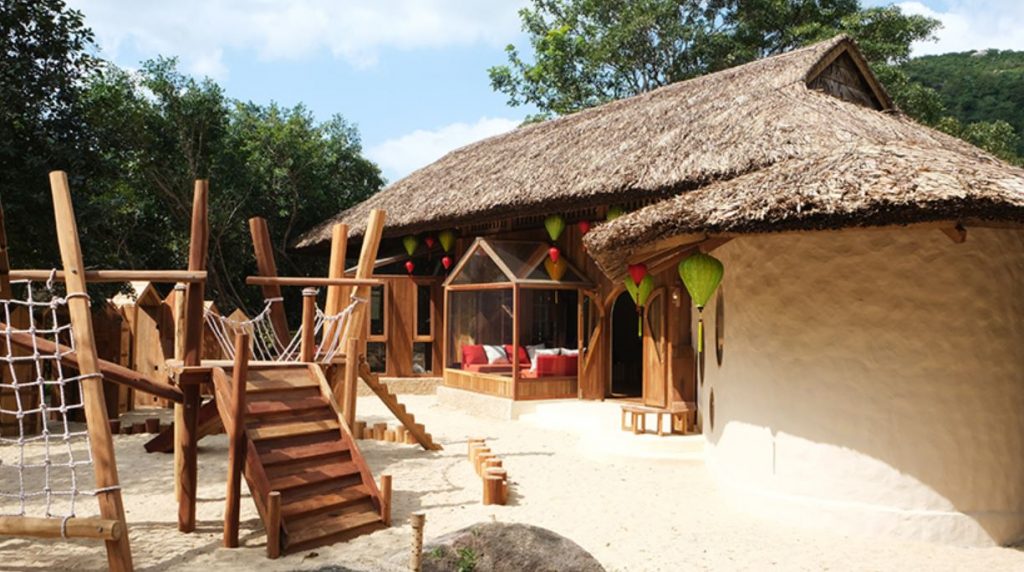
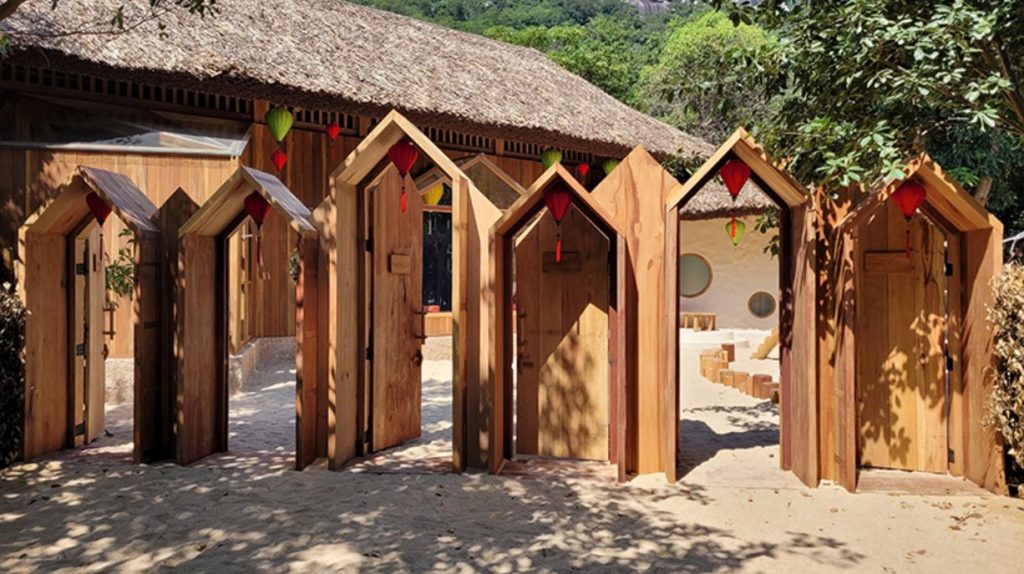
VOOC village kids club at the Sixsense Ninh Van Bay Resort
Named VOOC village, the structure is built with a traditional wooden truss frame, coconut leaf roof, rough plastered walls, wooden floorboards, and granite for the porch and toilet area. Inside, the kids club features include a ballroom, arts and crafts, yoga, and a media room.
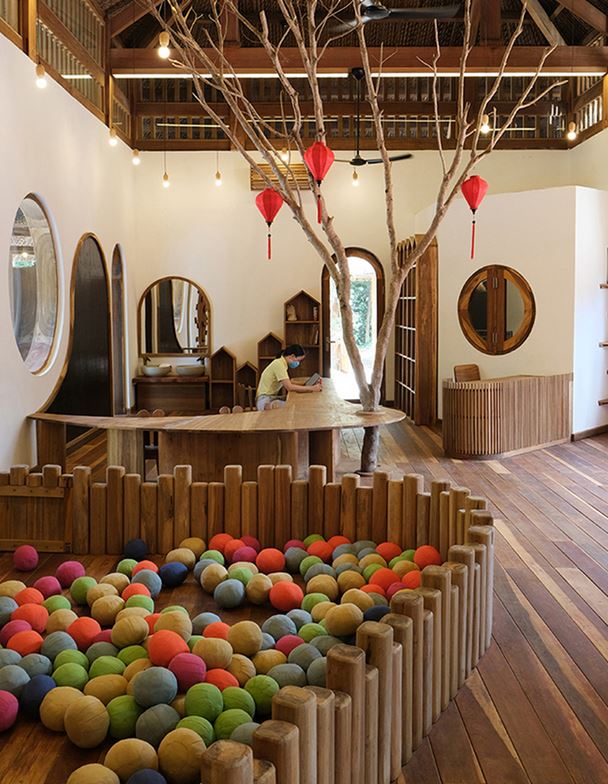
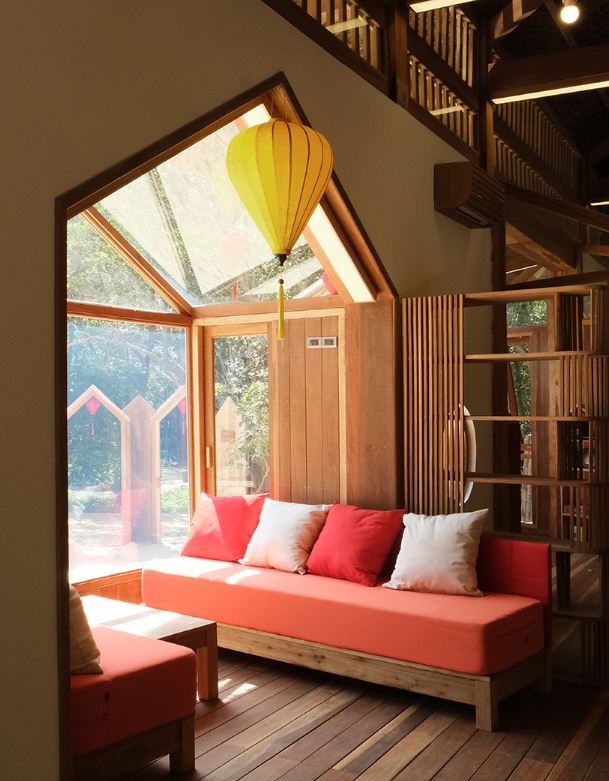
VOOC village kids club at the Sixsense Ninh Van Bay Resort
In front of the main building there is an open playground that includes a slide, trampoline, and swings, all made entirely of natural wood. Behind the structure, there is a climbing area simulating a forest, natural splash parks, and a zip line, as well as a planting garden, where children can learn about plants and how to cultivate them.
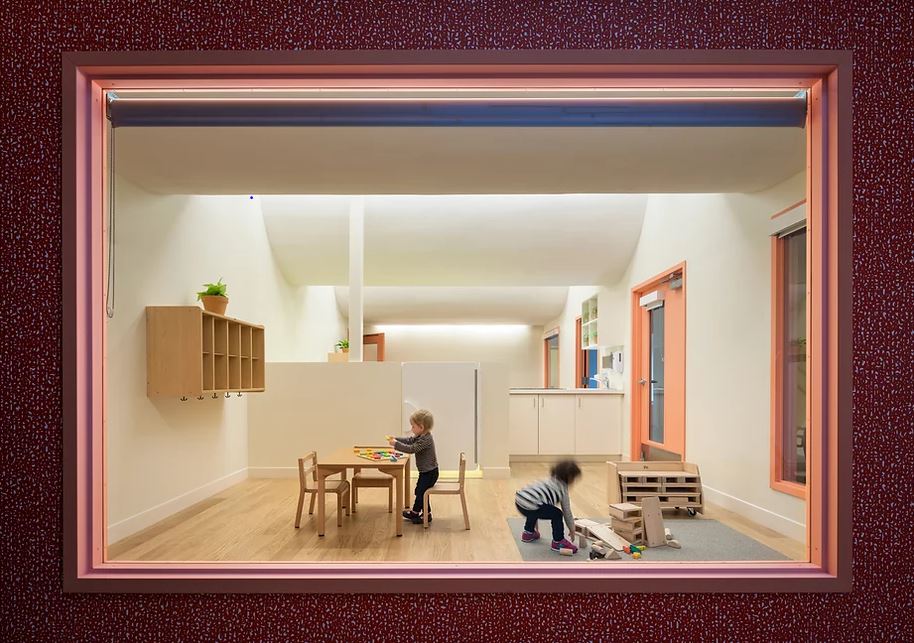
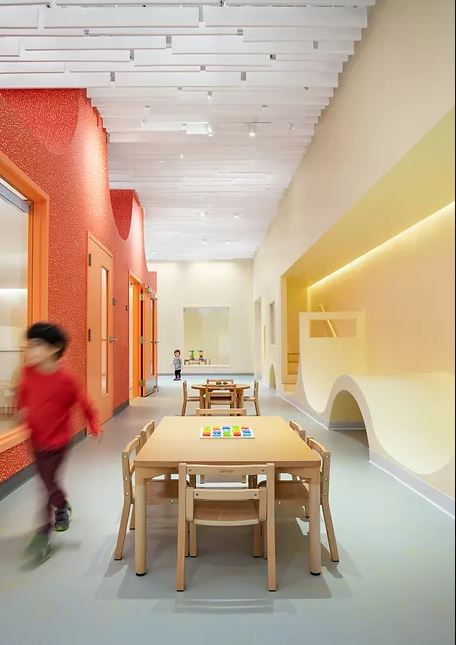
SolBe Learning Center Prototype by Supernormal
Located in the Boston area, USA, the 550 sqm SolBe Learning Center is a nursery and preschool for children aged six months to five years. The designers of the project, a local multidisciplinary firm Supernormal, sought to create a new type of daycare and learning environment that questions the traditional definition of the early learning “classroom.” The team conceived a model that pairs each classroom, called a Dwelling, with an open space, called a Yard. This combination of focused learning and free play space reflects the innovative curriculum, creating space that is sensitive to the needs of children as they transition through growth stages and times of the day.
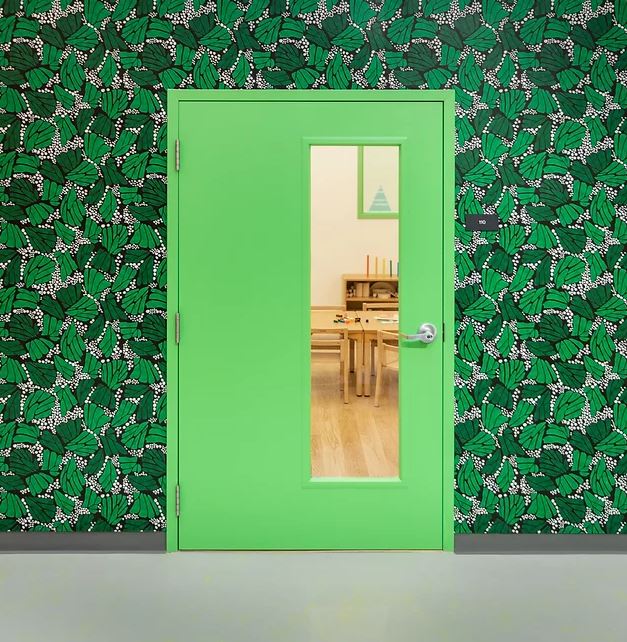
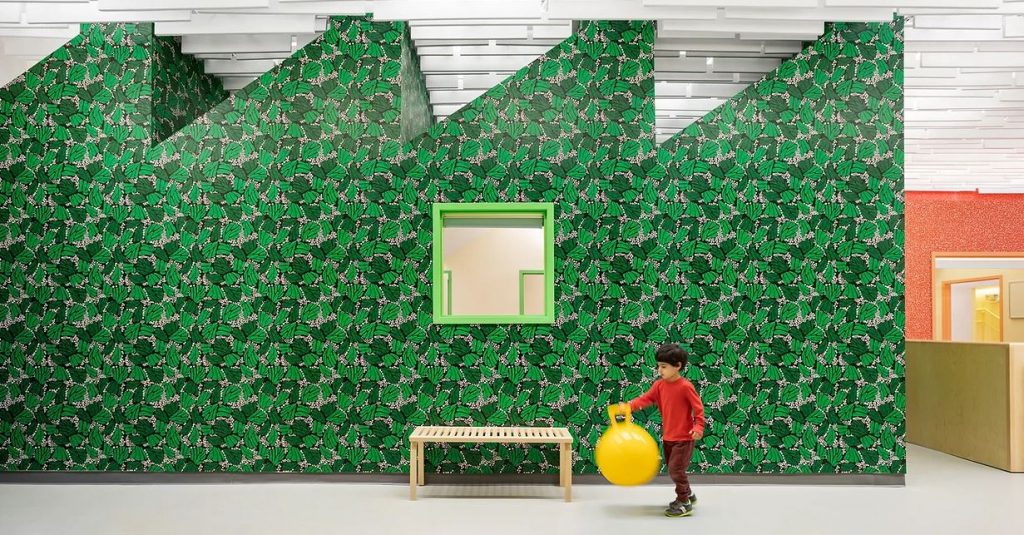
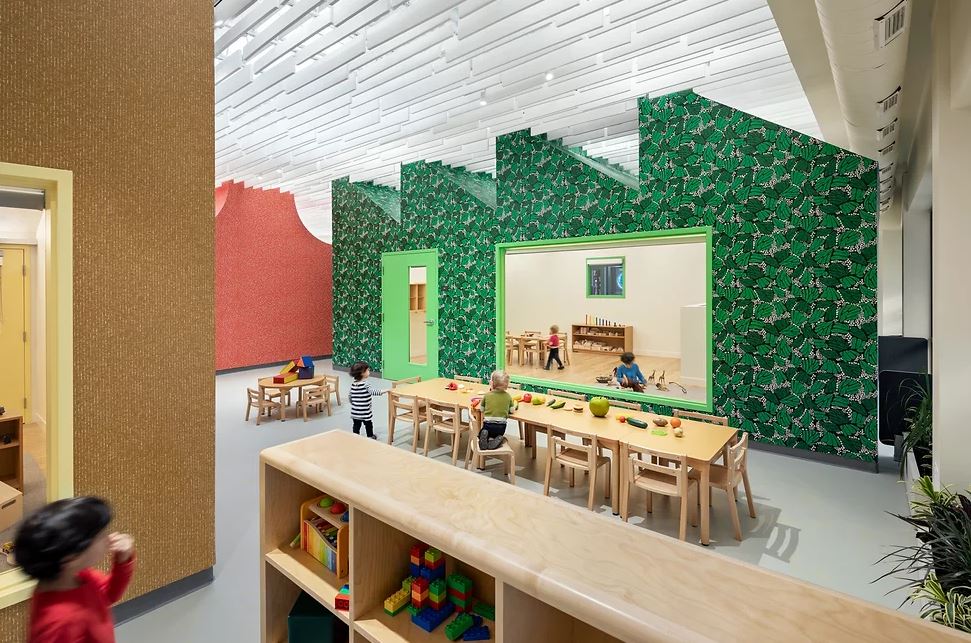
SolBe Learning Center Prototype by Supernormal
For the Dwellings, developed as islands within an open-floor plan, the architects created sculptural volumes finished in colourful, patterned wallpaper. The dynamic, billowing geometry of the ceiling allows for, and amplifies the effect of, indirect light in the classrooms. All together, this contributes to a sense of calm and wonder in the learning spaces.
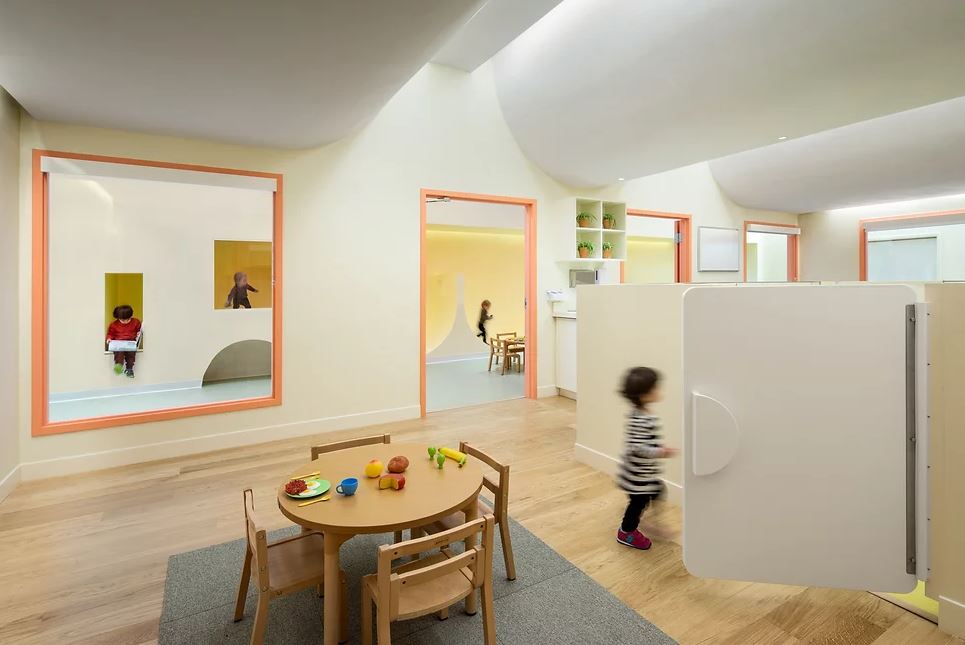
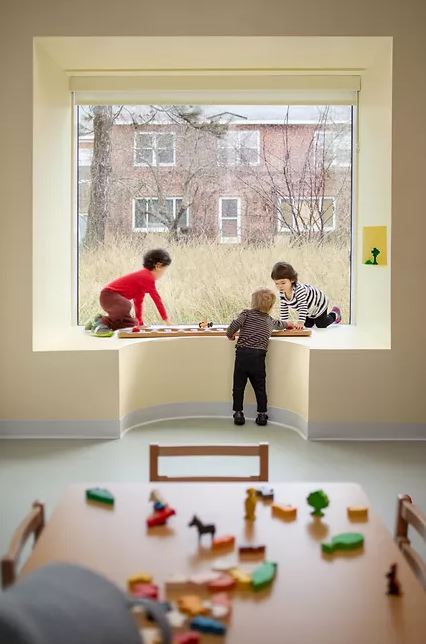
SolBe Learning Center Prototype by Supernormal
While the Dwellings provide space for focused, quiet learning, the Yards, in contrast, are intended for play, dining and group activities. These open areas include a 4.5 metre-high ceilings covered with a screen made of white, acoustic baffles and punctured with skylights. The natural light coming in through the openings creates a beautiful interplay of light and shadow and enables kids to observe how light and weather change throughout the day.
The center includes learning space for over 90 children and a commercial kitchen to support a seed-to-table curriculum.